Manufacturing
The Clothing Manufacturers' Guide: Manufacturing Puffer Jackets from Fabric to Filling
Manufacturing puffer jackets requires a careful process from selecting the right fabric to choosing the perfect filling. At The Clothing Manufacturers, we understand the importance of each step in creating high-quality puffer jackets that keep customers warm and stylish. Let’s delve into the world of manufacturing puffer jackets and explore the intricate details involved in this process.
The Global Map of Puffer Jacket Production
Puffer jackets, a quintessential element of winter wardrobes across the globe, are produced in a handful of countries known for their textile and garment manufacturing prowess. China, Vietnam, and Bangladesh stand at the forefront of this industry, each contributing significantly to the worldwide supply of these garments. These nations have carved out a niche in the production of puffer jackets, thanks to their comprehensive manufacturing ecosystems that encompass state-of-the-art facilities and a skilled workforce adept at handling the complexities involved in the creation of these jackets.

The strategic advantage of operating in these countries includes not only their expertise but also the efficiency with which they can scale up production to meet increasing international demand. The presence of an established supply chain, from sourcing the raw materials needed for the jackets to the final assembly lines, plays a crucial role in their ability to produce at competitive rates while maintaining quality. This is particularly important given the seasonal spikes in demand for puffer jackets in markets across the Northern Hemisphere.
Moreover, these countries are continually adapting to new manufacturing technologies and sustainable practices, striving to minimise their environmental footprint while enhancing the quality of their output. The integration of innovative techniques in fabric processing, filling selection, and waste reduction demonstrates their commitment to evolving with the industry’s demands for more environmentally friendly production processes.
This global manufacturing landscape is integral to understanding the availability, pricing, and variety of puffer jackets on the market. It highlights the interconnectedness of global trade and the pivotal role these manufacturing hubs play in clothing consumers around the world in stylish, functional, and affordable outerwear.
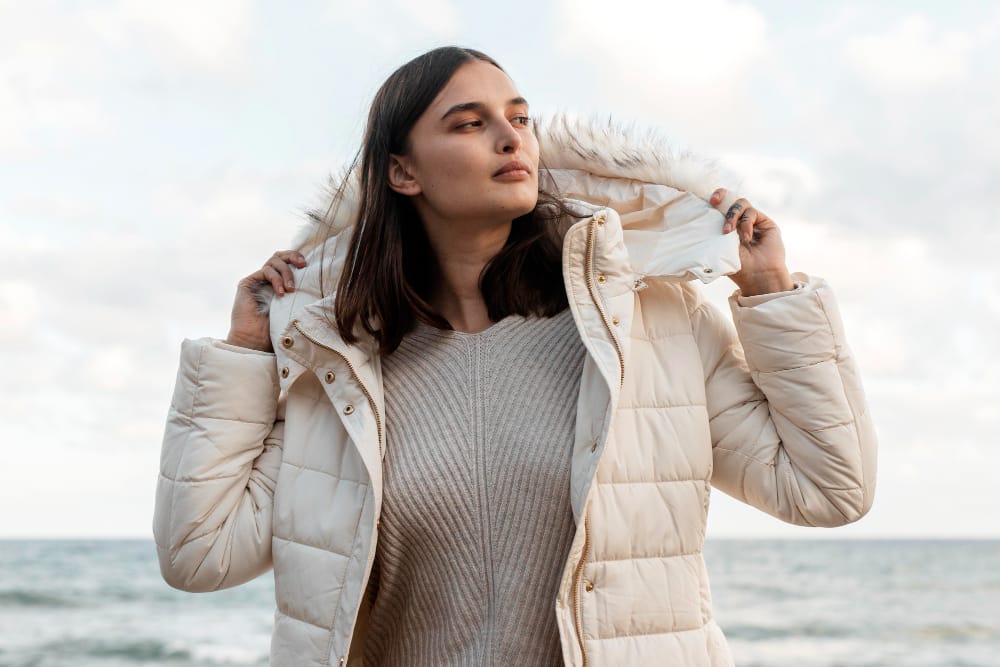
Choosing the Right Fabric for Puffer Jackets
In the realm of puffer jacket production, the selection of fabric is not merely a matter of aesthetic appeal; it is a fundamental decision that influences the garment’s functionality, comfort, and durability. Amongst the variety of textiles employed, nylon, polyester, and down-proof fabrics emerge as the primary choices, each bringing distinct advantages to the table. Nylon, celebrated for its lightweight nature and water-resistant capabilities, serves as an excellent option for the jacket’s outer shell, ensuring wearers remain dry and comfortable in damp conditions.
Polyester, on the other hand, is lauded for its resilience and ease of maintenance, offering a practical solution for everyday wear without compromising on longevity.
Delving deeper into the technicalities, down-proof fabrics warrant a special mention. Engineered to be impervious to feather leakage, these fabrics are integral to maintaining the structural integrity and insulative efficiency of down-filled puffer jackets. Their meticulous weave prevents the escape of down feathers, thus ensuring the jacket’s filling remains evenly distributed and retains its insulating properties over time.
As manufacturers navigate through the plethora of fabric options, the decision ultimately hinges on a balance between performance characteristics and consumer preferences. Innovations in textile technology continually enrich this selection process, introducing fabrics that not only meet the functional requirements of puffer jackets but also align with the growing demand for sustainability. By harnessing these advanced materials, manufacturers can craft garments that stand the test of time, both in terms of style and environmental consciousness.
The Ins and Outs of Puffer Jacket Fillings
At the heart of every puffa jacket lies its filling, a crucial component that dictates the garment’s insulative capabilities and overall comfort. Down feathers and synthetic fibres, such as polyester and PrimaLoft, emerge as the leading choices, each with its own set of attributes that cater to different needs and preferences.
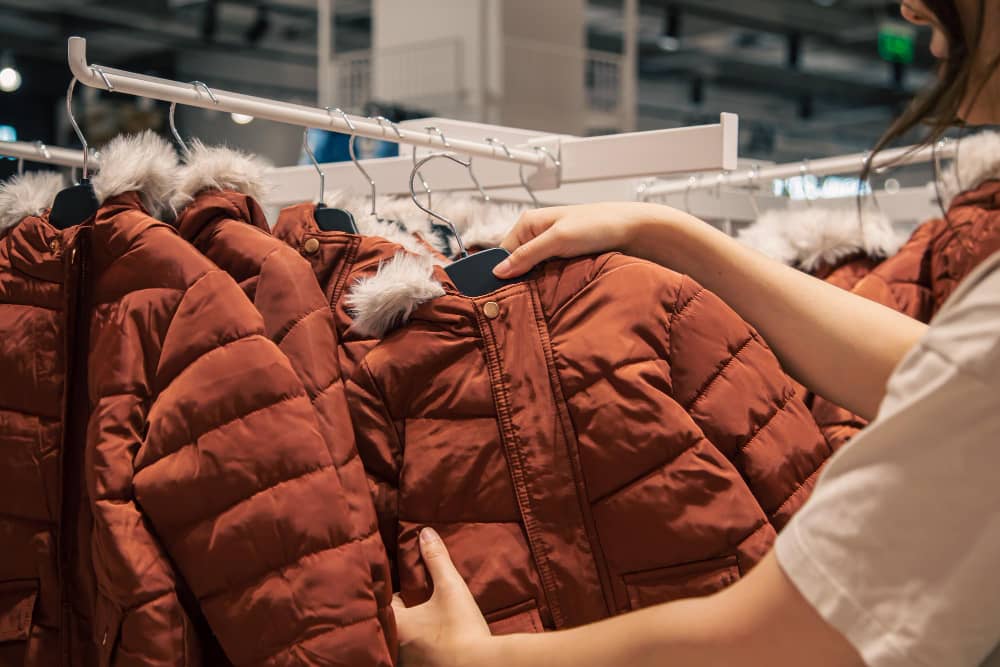
Down, the soft undercoating clustered beneath the feathers of geese and ducks, stands out for its unrivalled warmth-to-weight ratio. Its natural loft creates air pockets that trap warmth efficiently, offering superior insulation while maintaining a light feel. This makes down-filled puffa jackets exceptionally sought after for their blend of warmth, comfort, and compressibility, ideal for colder climes and high-end markets.
Conversely, synthetic fillings present a viable alternative that mirrors the insulative qualities of down without the drawbacks. Innovations in synthetic insulation, such as polyester fibres and PrimaLoft, provide significant warmth even when wet, a feature where down traditionally falls short. These materials are not only quick-drying but also offer a hypoallergenic solution, appealing to those with sensitivities to animal products. Moreover, their affordability and ethical appeal make synthetic-filled jackets a popular choice among a broader audience.
The selection between down and synthetic fillings ultimately hinges on the intended use, budget, and personal ethics of the wearer. As the industry moves towards more sustainable practices, the exploration of eco-friendly fillings, including recycled materials and advanced synthetics, is set to redefine the standards of puffa jacket production, aligning warmth and style with environmental stewardship.
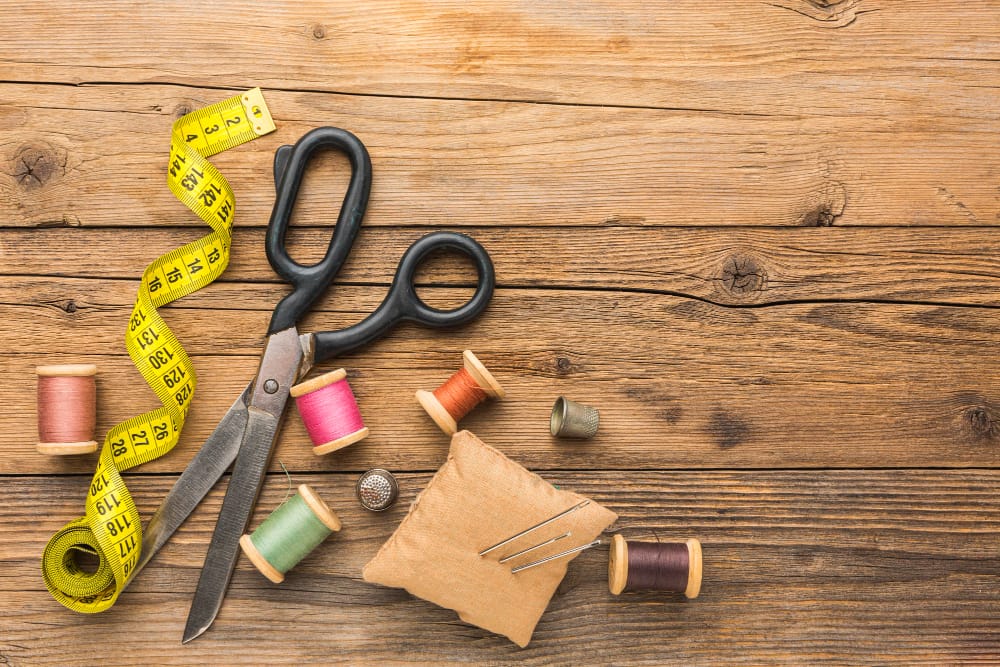
The Stitching Process: Bringing Puffer Jackets to Life
The stitching process in puffer jacket manufacturing is a pivotal stage where the chosen fabrics and fillings are united to embody the jacket’s final form. Utilising either baffle or quilt stitching techniques, this phase ensures the even distribution of filling, which is fundamental in maintaining the jacket’s insulative integrity and achieving the iconic puffed appearance. Baffle stitching involves creating fabric boxes or channels that are filled with down or synthetic fibres, allowing for loft and thus maximum insulation. Quilt stitching, alternatively, secures the filling in a decorative pattern, contributing not only to the functionality but also to the aesthetic allure of the garment.
Expert seamstresses and tailors play a critical role at this juncture, meticulously sewing each piece with precision. Their craftsmanship is evident in the uniformity of the stitch lines and the seamless integration of panels, which collectively enhance the jacket’s durability and wearability. Special attention is paid to areas prone to stress or wear, such as seams, zips, and pockets, ensuring these are reinforced to withstand regular use.
Innovation in stitching technology and techniques also allows for increased efficiency and creativity in puffer jacket design. Automated sewing machines equipped with state-of-the-art features enable the production of complex patterns and designs, allowing brands to push the boundaries of traditional puffer jacket aesthetics. Nevertheless, the human touch remains indispensable, as quality assurance through visual and tactile inspection ensures that each jacket not only meets the brand’s standards but also the expectations of end consumers. This harmonious blend of traditional craftsmanship and modern technology encapsulates the essence of contemporary puffer jacket manufacturing.
Quality Control and Final Touches
Ensuring the highest quality of puffer jackets is an imperative final step in the manufacturing process. This phase meticulously evaluates every aspect of the jacket, from the integrity of the fabric to the uniformity and strength of stitching. Inspectors rigorously examine each garment, identifying and addressing any discrepancies that may compromise the jacket’s performance or appearance.

The process of quality control extends to ensuring the filling maintains consistent distribution throughout the garment, critical for optimal warmth and the jacket’s overall aesthetic. Checks on the effectiveness of zips, buttons, and any additional fixtures like hoods or adjustable cords are carried out with a keen eye for detail, affirming their functionality and durability against wear and tear.
Adjustments in fit and finish are made with precision, fine-tuning the garment to match the brand’s specifications and ensuring it meets the expectations of the discerning consumer. The application of waterproof or water-resistant treatments, if required, is also verified during this stage, reinforcing the garment’s ability to withstand damp conditions.
By prioritising these final touches, the commitment to delivering a product that stands out for its quality and craftsmanship is underscored. It’s a testament to the brand’s dedication to excellence, ensuring that each puffer jacket not only meets but exceeds the standards of both the manufacturer and, ultimately, the customer.
Innovations in Puffer Jacket Manufacturing
In the rapidly evolving world of puffer jacket manufacturing, the drive towards innovation is reshaping the industry. A key trend is the shift towards sustainability, where manufacturers are increasingly integrating recycled materials into their production processes. These include repurposed fabrics and fillings, which not only reduce waste but also minimise the environmental impact of new garment production. The development of advanced synthetic insulations that replicate the warmth and compressibility of down without its ecological and ethical concerns is another area of focus. Techniques in garment construction have also seen remarkable advancements, with seamless technology and laser cutting improving both efficiency and the aesthetic finish of jackets. Additionally, the exploration of biodegradable materials and dyes underscores the industry’s commitment to reducing its carbon footprint. These innovations are pivotal in creating puffer jackets that align with contemporary values of sustainability, functionality, and style, meeting the demands of an environmentally conscious consumer base.
FAQ’s
Related Latest Blogs
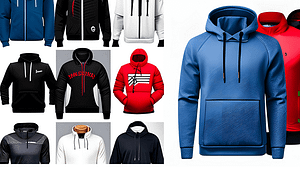
From Classic to Quirky: A Guide to Different Types of Hoodies
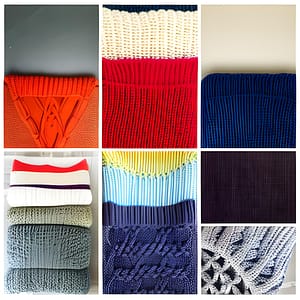
Wrap Yourself in Comfort: A Stylish Guide to the Different Types of Sweaters
